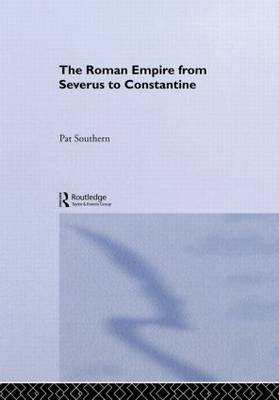
The Roman Empire from Severus to Constantine
Seiten
2001
Routledge (Verlag)
978-0-415-23943-1 (ISBN)
Routledge (Verlag)
978-0-415-23943-1 (ISBN)
- Titel erscheint in neuer Auflage
- Artikel merken
Zu diesem Artikel existiert eine Nachauflage
It might have been thought that the Roman Empire should have collapsed in the 260s - yet it did not. Pat Southern shows how this was possible by providing a chronological history from the end of the second century to the beginning of the fourth.
The third century AD in the Roman Empire began and ended with Emperors who are recognised today as being strong and dynamic - Septimius Severus, Diocletian and Constantine. Yet the intervening years have traditionally been seen as a period of crisis. The 260s saw the nadir of Imperial fortunes, with every frontier threatened or overrun, the senior emperor imprisoned by the Persians, and Gaul and Palmyra breaking away from central control. It might have been thought that the empire should have collapsed - yet it did not.
Pat Southern shows how this was possible by providing a chronological history of the Empire from the end of the second century to the beginning of the fourth; the emergence and devastating activities of the Germanic tribes and the Persian Empire are analysed, and a conclusion details the economic, military and social aspects of the third century 'crisis'.
The third century AD in the Roman Empire began and ended with Emperors who are recognised today as being strong and dynamic - Septimius Severus, Diocletian and Constantine. Yet the intervening years have traditionally been seen as a period of crisis. The 260s saw the nadir of Imperial fortunes, with every frontier threatened or overrun, the senior emperor imprisoned by the Persians, and Gaul and Palmyra breaking away from central control. It might have been thought that the empire should have collapsed - yet it did not.
Pat Southern shows how this was possible by providing a chronological history of the Empire from the end of the second century to the beginning of the fourth; the emergence and devastating activities of the Germanic tribes and the Persian Empire are analysed, and a conclusion details the economic, military and social aspects of the third century 'crisis'.
| Erscheint lt. Verlag | 6.9.2001 |
|---|---|
| Verlagsort | London |
| Sprache | englisch |
| Maße | 156 x 234 mm |
| Gewicht | 830 g |
| Themenwelt | Geschichte ► Allgemeine Geschichte ► Vor- und Frühgeschichte |
| Geschichte ► Allgemeine Geschichte ► Altertum / Antike | |
| Geisteswissenschaften ► Geschichte ► Regional- / Ländergeschichte | |
| ISBN-10 | 0-415-23943-5 / 0415239435 |
| ISBN-13 | 978-0-415-23943-1 / 9780415239431 |
| Zustand | Neuware |
| Haben Sie eine Frage zum Produkt? |
Mehr entdecken
aus dem Bereich
aus dem Bereich
auf den Spuren der frühen Zivilisationen
Buch | Hardcover (2023)
C.H.Beck (Verlag)
20,00 €
Konzepte – Methoden – Theorien
Buch | Softcover (2024)
UTB (Verlag)
39,90 €
Was Pompeji über uns erzählt
Buch | Hardcover (2023)
Propyläen (Verlag)
32,00 €



